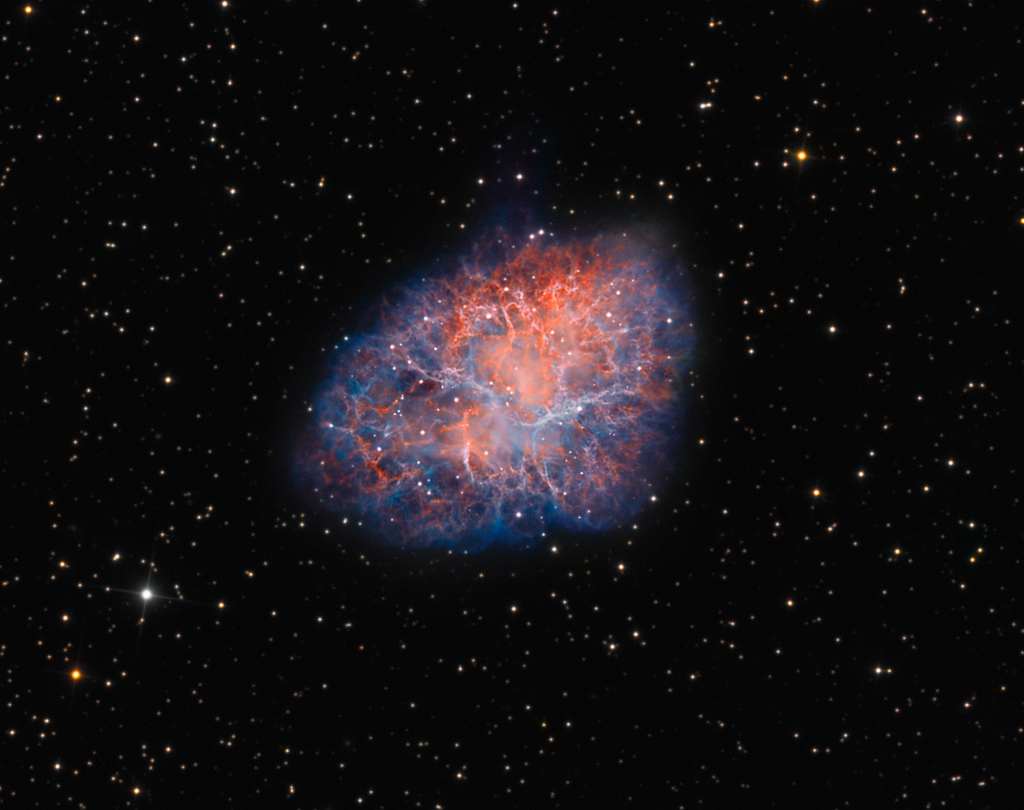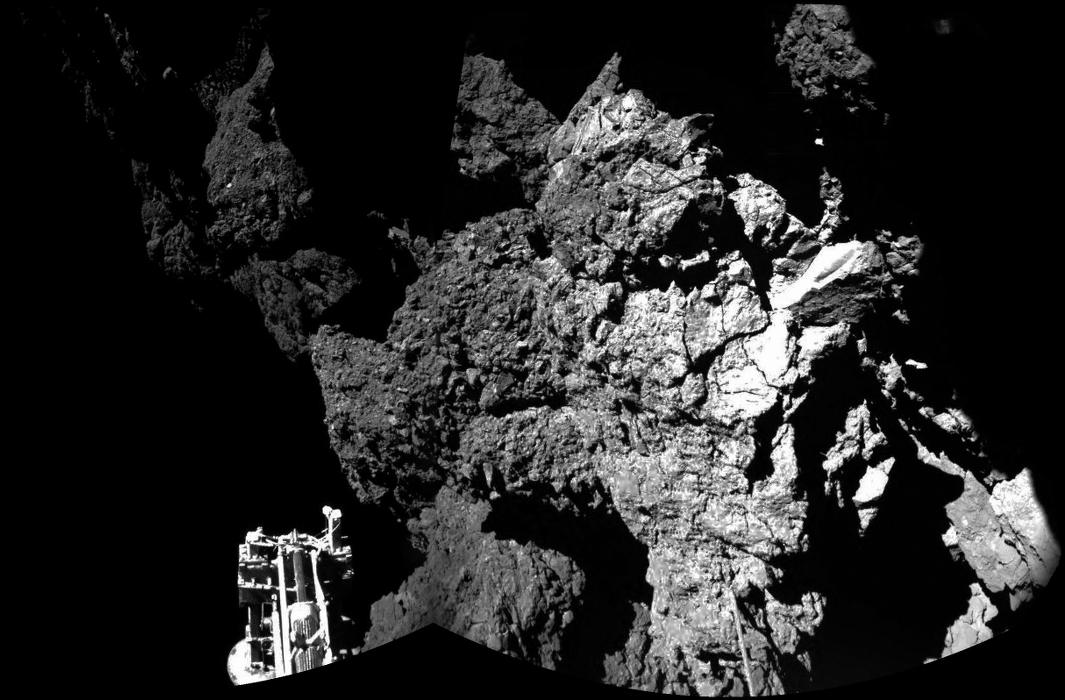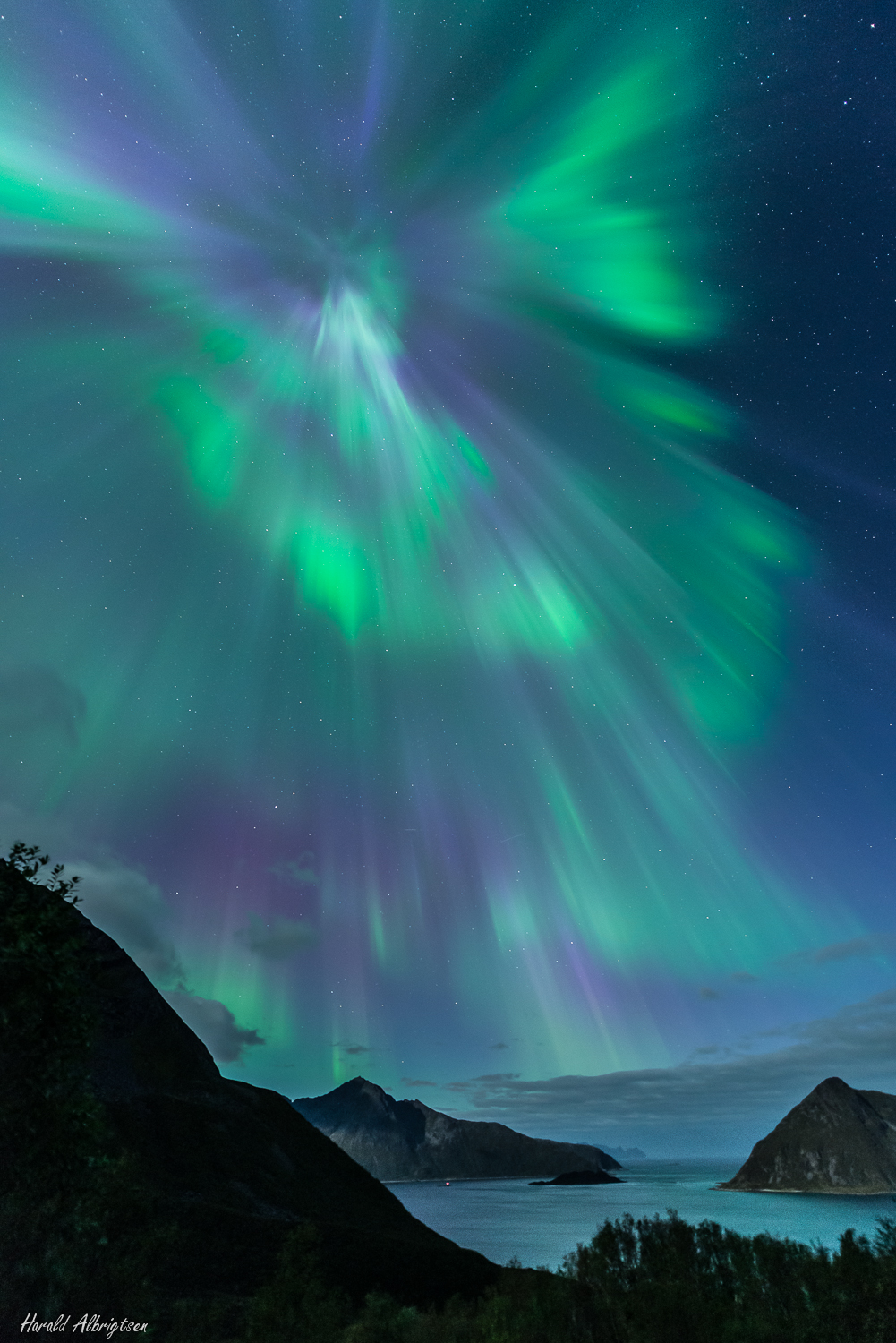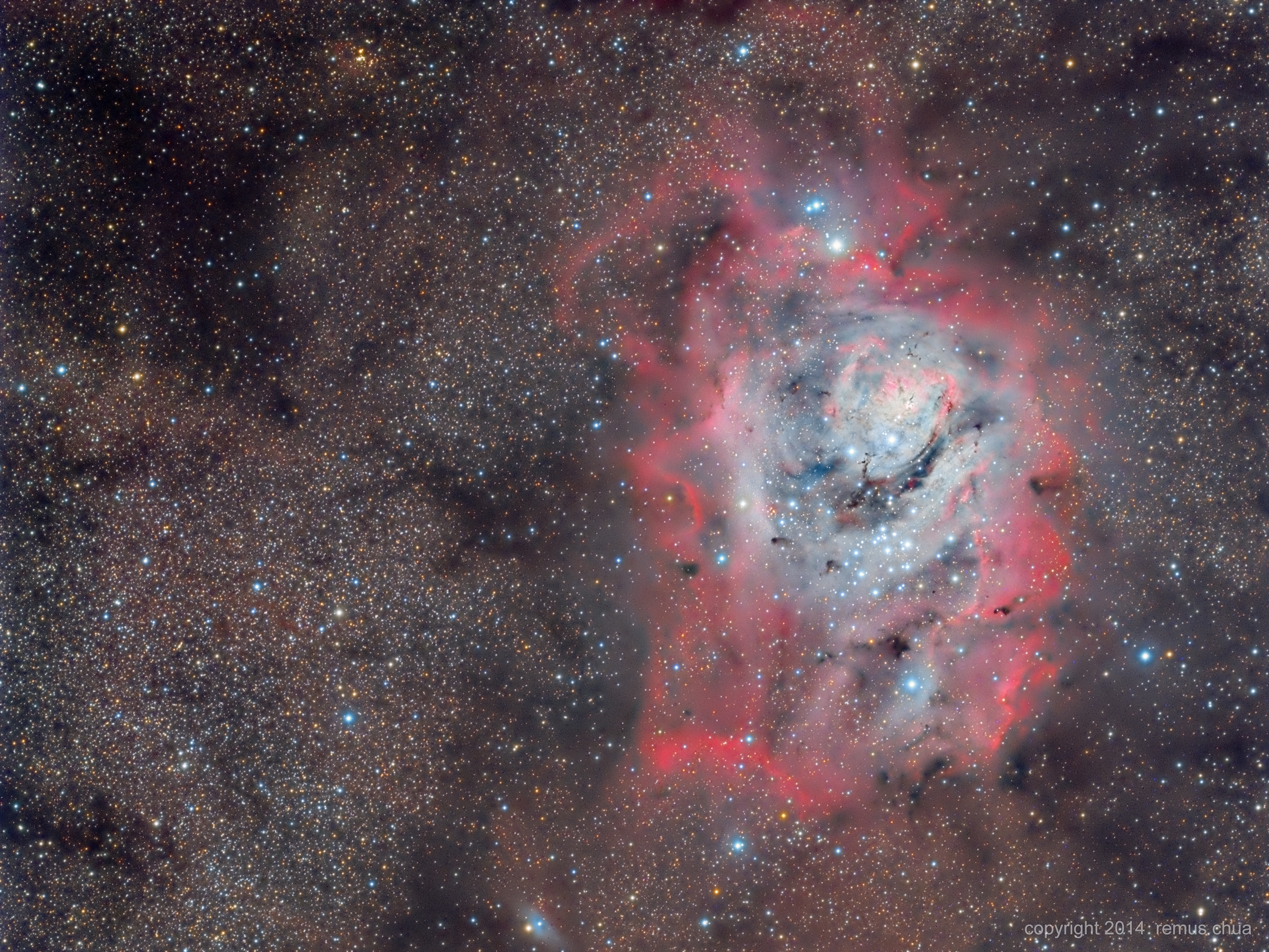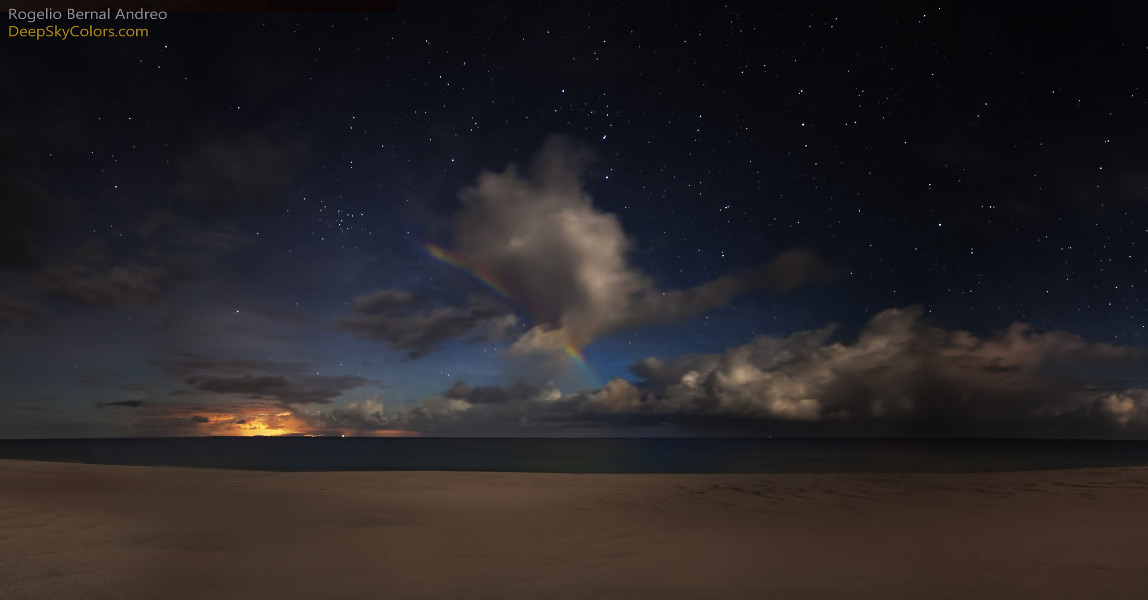The mountaintop dome of Kitt Peak National Observatory near Tucson, Arizona is illuminated by light from a last quarter moon. Jupiter can be seen just left of the overexposed lunar disk. Near the center of the picture is a moondog or paraselene, directly over Kitt Peak's WIYN telescope. A paraselene is produced by moonlight refracted through thin, heaxagonal, plate-shaped ice crystals in high cirrus clouds.
Friday, December 19, 2014
Friedrich Georg Struve Sources
Works Cited
"Friedrich Georg Wilhelm Struve." Friedrich Struve, German Astronomer in St. Petersburg. Saint-Petersburg.com, n.d. Web. 19 Dec. 2014. <http://www.saint-petersburg.com/german/friedrich-georg-wilhelm-struve/>.
"Friedrich Georg Wilhelm Von Struve." Encyclopedia Britannica Online. Encyclopedia Britannica, n.d. Web. 19 Dec. 2014. <http://www.britannica.com/EBchecked/topic/569740/Friedrich-Georg-Wilhelm-von-Struve>.
Wessel, Jim. "Friedrich Georg Wilhem Von Struve." (n.d.): n. pag. Web. 18 Dec. 2014. <http://www.davidstestingground.com/>.
Friday, December 12, 2014
APOD 2.5
Stars and Dust Pillars in NGC 7822 from WISE: http://apod.nasa.gov/apod/ap141201.html
Towards Cepheus, this star forming region can be seen about 3,000 light years away. This photo was taken with infrared light by NASA's Wide Field Infrared Survey Explorer satellite. The atomic emission by the cluster's gas is powered by radiation from star. Stars could still be forming inside pillars through gravitational collapse. This field is around 40 light years wide. I love how the dust pillars are photographed.
Sunday, November 30, 2014
Observation Post- Thanksgiving Break
Date: November 26, 27, 28
Time: 11:00 PM - 1:00 AM (6 hours total)
Place: Sarasota, FL
Sky conditions: Mostly clear, slightly cloudy at times
Instruments used: Sky map app
Bright stars noted: Polaris, Delta Cephei, Mira, Gamma Andromeda
Constellations noted: Pegasus, Cassiopeia, Cepheus, Orion, Ursa Minor, Cetus, Andromeda
Notes: Observed the moon in first quarter phase on the 28th
Time: 11:00 PM - 1:00 AM (6 hours total)
Place: Sarasota, FL
Sky conditions: Mostly clear, slightly cloudy at times
Instruments used: Sky map app
Bright stars noted: Polaris, Delta Cephei, Mira, Gamma Andromeda
Constellations noted: Pegasus, Cassiopeia, Cepheus, Orion, Ursa Minor, Cetus, Andromeda
Notes: Observed the moon in first quarter phase on the 28th
Observation - November 6th
Date: November 6th
Time: 6:00 PM - 8:00 PM
Place: Sarasota, FL
Sky conditions: Clear
Instruments used: Sky map app
Bright stars noted: Gamma Andromeda, Polaris
Constellations noted: Ursa Minor, Andromeda
Notes: The full moon could be seen very easily since it was so clear.
Time: 6:00 PM - 8:00 PM
Place: Sarasota, FL
Sky conditions: Clear
Instruments used: Sky map app
Bright stars noted: Gamma Andromeda, Polaris
Constellations noted: Ursa Minor, Andromeda
Notes: The full moon could be seen very easily since it was so clear.
Friday, November 21, 2014
APOD 2.4
M1 The Crab Nebula: http://apod.nasa.gov/apod/ap141121.html
The Crab Nebula is the first thing on Charles Messier's 18th century list of things that are not comets. The Crab is in fact a supernova remnant, debris from the explosion of a dying star, witnessed by astronomers in 1054. Near the nebula's center is a neutron star spinning 30 times a second called the Crab Pulsar. This nebula looks really cool cause it looks almost electric, as if it's made up of lightning bolts.
Friday, November 14, 2014
APOD 2.3
Welcome to a Comet: http://apod.nasa.gov/apod/ap141114.html
The Rosetta Mission lander is safely on a comet,C67/P Churyumov-Gerasimenko. In the bottom left, one of Philae's feet can be seen. A surface panorama suggest that the lander is slightly tilted and near a shadowing wall, with the lander's solar panels receiving less light than hoped for. I love this photo cause it's really cool that we have successfully put a lander on a comet and are able to explore it through the images.
APOD 2.2
Sh2-155: The Cave Nebula: http://apod.nasa.gov/apod/ap141106.html
About 2,400 years away, the Cave Nebula lies along the plane of the Milky Way, near Cepheus. It has formed at the boundary of the Cepheus B molecular cloud and the stars of the Cepheus OB 3 association. The ionization is driven by radiation, which is likely causes new stars to form. This nebula is 10 light years across.
APOD 2.1
October 29th, 2014- Iridescent Cloud Edge Over Colorado: http://apod.nasa.gov/apod/ap141029.html
This image was taken during a partial solar eclipse, which was blocked by clouds for the photographer. Iridescence occurred in a nearby cloud, which is the diffraction of sunlight around a thin layer of nearly equal sized water droplets. Contrails from an airplane are visible on the right side of this photo, too. This photo is very unique because it's very dark with a splash of colors in the center, along with the seemingly blinding white light, which actually is contrails from an airplane.
Wednesday, October 29, 2014
Great World Wide Star Count
Date: October 29, 2014
Time: 9:00 PM
Lat: 27.1827640
Lon: -82.4806090
Limiting Magnitude 4
Saw Deneb and the constellation Cygnus, as well as observed the waxing crescent phase of the moon.
Time: 9:00 PM
Lat: 27.1827640
Lon: -82.4806090
Limiting Magnitude 4
Saw Deneb and the constellation Cygnus, as well as observed the waxing crescent phase of the moon.
Sunday, October 19, 2014
Observation - October 17th
Date: October 17th
Time: 10:00 PM -12:00 AM
Place: Osprey, FL
Sky conditions: Clear
Instruments used: Binoculars and Sky Map app
Planets: Mars and Jupiter
Bright stars: Antares, Polaris, Summer Triangle (Vega, Deneb, Altair)
Constellations noted: Scorpius, Ursa Minor
Notes: While stargazing, I was looking online to see if there were to be any unusual things happening in the sky that night and discovered that Jupiter and the moon were supposed to be close together. Unfortunately, this was supposed to happen very early in the morning so I did not get to see this, but did note Jupiter moving closer and closer to the moon throughout the evening.
Total for Quarter 1: 4 hours
Time: 10:00 PM -12:00 AM
Place: Osprey, FL
Sky conditions: Clear
Instruments used: Binoculars and Sky Map app
Planets: Mars and Jupiter
Bright stars: Antares, Polaris, Summer Triangle (Vega, Deneb, Altair)
Constellations noted: Scorpius, Ursa Minor
Notes: While stargazing, I was looking online to see if there were to be any unusual things happening in the sky that night and discovered that Jupiter and the moon were supposed to be close together. Unfortunately, this was supposed to happen very early in the morning so I did not get to see this, but did note Jupiter moving closer and closer to the moon throughout the evening.
Total for Quarter 1: 4 hours
Friday, October 17, 2014
APOD 1.8
Auroral Corona Over Norway: http://apod.nasa.gov/apod/ap141014.html
Aurora light is created when electrons and protons strike atoms and molecules in Earth's atmosphere. Auroras rarely reach below 60 kilometers, while ranging up to 1000 kilometers. An aurora coronal is kind of uncommon as it looks like the center point of the display of colors. This blue and green aurora occured over mountains in Norway a month ago. I am fascinated by the light shows created by auroras. This specific one reminds me of tie-dye shirts.
APOD 1.7
From The Temple of the Sun to the Temple of the Moon: http://apod.nasa.gov/apod/ap141007.html
In Capitol Reef National Park, Utah, USA, there are two huge sandstone monoliths. The one on the right is the the Temple of the Moon and the one on the left if the Temple of the Sun. This photo shows the two monoliths connected by the Milky Way Galaxy. The monoliths date back to the Jurassic period and stand 100 meters tall. The Andromeda Galaxy can also be seen in this photo. I love how the Milky Way Galaxy is in a semi-circle, reminding me of a rainbow full of stars. It's also kind of ironic how the brighter side is near the Temple of the Moon considering the Sun radiates light and the moon only reflects it.
Friday, October 10, 2014
Willebrord Snell Biography
Willebrord Snell was born in 1580 in Leiden, Netherlands. Although
there is no record of his birth his birthday can be estimated based on a letter
his father, Rudolph Snell, wrote on his son's birthday. It's assumed he was
born on June 13th, 1580. His father was a mathematics professor at University
of Leiden and his mother, Machteld Cornelisdochter, came from Oudewater. He was
the eldest of three children, but his younger brothers, Jacob and Hendrik, both
died at a young age.
Willebrord went on to study law at University of Leiden, but
started teaching mathematics at Leiden later. He toured Europe before returning
to Leiden to prepare a Latin translation of Wisconstighe
Ghedachtenissen by Simon
Stevin. He also restored two books by Apollonius on plane loci that was
preserved by Pappus. In 1608, Snell received the degree for Master of Arts from
University of Leiden. He then married Maria De Lange, who was the daughter of a
burgomaster of Schoonhoven. They supposedly had eighteen children, but only
three of them survived to adulthood.
Upon Rudolph Snell's death in March 1613, Willebrord began
teaching in his place. He became a professor teaching mathematics, astronomy,
and optics. In 1613, Willebrord published Ramus Arithmetica with his own commentary. In 1615, he set his eyes on
determining the length of the meridian by using triangulation. Snell developed
the method so much that some argue he is rightfully the father of
triangulation. Snell used the distance between Leiden and Zoeterwoude as the
baseline and used the spires of churches closeby as reference points. His
results were published in Eratosthenes
batavus. He continued to work on making his results more accurate and
precise throughout his entire life, the rest of his findings were posted by one
of his students after Willebrord’s death. His final calculated value for the
length of a degree of the meridian was 69 miles, which is within a few hundred
meters of the currently accepted value.
Snell went on to discover the law of refraction. Scientists searched
for an explanation to why light rays appear bent when passing to denser medium.
Snell’s research identified the ratio of the sines of the angles of the
incident and refracted rays to the normal as the constant. Snell never
published these findings, but his manuscript was discovered by Isaacus Vossius
and Christiaan Huygens, who then noted it in their own works. René Descartes
presented the law without any proof in his 1637 publication, Dioptrique, which lead some to accuse
him of plagiarism. There is no evidence though. Snell supported the
Ptolemaic system whole-heartedly. He did observe the comet of 1618 and note it
was above the Moon, however.
Willebrord
Snell died in Leiden on October 30th, 1626 from colic. It caused a
fever and paralysis of his limbs.
Works Cited
O'Connor, J. J., and E. F. Robertson. "Willebrord Van Royen Snell." Snell Biography. N.p., n.d. Web. 10 Sept. 2014. <http://www-history.mcs.st-and.ac.uk/Biographies/Snell.html>.
"Snel (Snellius or Snel van Royen), Willebrord." Complete Dictionary of Scientific Biography. Vol. 12. Detroit: Charles Scribner's Sons, 2008. 499-502. Gale Virtual Reference Library. Web. 10 Sept. 2014. <http://go.galegroup.com/ps/i.do?id=GALE%7CCX2830904066&v=2.1&u=fl_sarhs&it=r&p=GVRL&sw=w&asid=8bd327844e3d79defe085de8edae3c82>.
Norton, Stephen D. "Willebrord Snell." Science and Its Times. Ed. Neil Schlager and Josh Lauer. Vol. 3: 1450 to 1699. Detroit: Gale, 2001. 383-384. Gale Virtual Reference Library. Web. 10 Sept. 2014. <http://go.galegroup.com/ps/i.do?id=GALE%7CCX3408501397&v=2.1&u=fl_sarhs&it=r&p=GVRL&sw=w&asid=b93f88b3d05caa002f85ccbb64652ebe>.
Friday, October 3, 2014
APOD 1.6
A Full Circle Rainbow over Australia: http://apod.nasa.gov/apod/ap140930.html
From the air, a full 360 degree rainbow can be seen. When a rainbow is seen from the ground it's only a partial one because directions toward the ground lack a lot of raindrops. This rainbow was seen over Cottesloe Beach, which is near Perth, Australia. It was captured from a helicopter while the sun was setting during a downpour. The rainbow appeared to "follow" the helicopter for 5 kilometers since it's an observer-dependent phenomenon. I have never seen a full rainbow before and find this really fascinating. I also love the faint second rainbow surrounding it, but the second rainbow has reversed colors. I hope I can see one of these one day.
From the air, a full 360 degree rainbow can be seen. When a rainbow is seen from the ground it's only a partial one because directions toward the ground lack a lot of raindrops. This rainbow was seen over Cottesloe Beach, which is near Perth, Australia. It was captured from a helicopter while the sun was setting during a downpour. The rainbow appeared to "follow" the helicopter for 5 kilometers since it's an observer-dependent phenomenon. I have never seen a full rainbow before and find this really fascinating. I also love the faint second rainbow surrounding it, but the second rainbow has reversed colors. I hope I can see one of these one day.
Friday, September 26, 2014
APOD 1.5
The Lagoon Nebula in Stars Dust and Gas: http://apod.nasa.gov/apod/ap140924.html
The Lagoon Nebula is so bright that it can be seen without a telescope. It's located near Sagittarius and it spans 100 light years across. Inside the nebula is NGC 6530, an open cluster of stars. The nebula is called "Lagoon" due to the band of dust seen to the left of NGC 6530. The Hourglass Nebula, a knot of gas and dust, is located in center of the nebula. The Lagoon Nebula is home to many stars and it's amazing to see how there are so many things within in the "Lagoon." I love the outer ring of red color formed by M8 and how it contrasts with the white-blue in the center.
The Lagoon Nebula is so bright that it can be seen without a telescope. It's located near Sagittarius and it spans 100 light years across. Inside the nebula is NGC 6530, an open cluster of stars. The nebula is called "Lagoon" due to the band of dust seen to the left of NGC 6530. The Hourglass Nebula, a knot of gas and dust, is located in center of the nebula. The Lagoon Nebula is home to many stars and it's amazing to see how there are so many things within in the "Lagoon." I love the outer ring of red color formed by M8 and how it contrasts with the white-blue in the center.
Sunday, September 21, 2014
APOD 1.4
M27: The Dumbbell Nebula- http://apod.nasa.gov/apod/ap140914.html
In 1764, M27, or the Dumbbell Nebula, was discovered. It's a planetary nebula and our first hint at what the future of the Sun is like. This type of nebula is the kind that our Sun will create when nuclear fission stops in the Sun's core. M27 is one of the brightest planetary nebulae and can be seen near Vulpecula. It's so cool how our Sun will one day look like this. I love how the colors seem to change in a ring-like pattern.
In 1764, M27, or the Dumbbell Nebula, was discovered. It's a planetary nebula and our first hint at what the future of the Sun is like. This type of nebula is the kind that our Sun will create when nuclear fission stops in the Sun's core. M27 is one of the brightest planetary nebulae and can be seen near Vulpecula. It's so cool how our Sun will one day look like this. I love how the colors seem to change in a ring-like pattern.
Friday, September 19, 2014
Observation - September 18th, 2014
Date: September 18th, 2014
Time: 8:00 PM - 9:00 PM
Place: Casey Key Fish House
Sky Conditions: Very cloudy
Instruments used: Binoculars and Meade 10"
Planets: Observed Saturn and Mars through telescope
Bright stars noted: At the zenith, the summer triangle: Vega, Altair, and Deneb; Anatares, very bright and "flickered"
Constellations noted: Scorpius, Sagittarius, and Hercules
Binary stars: None noted
Deep sky objects: None
Other: Observed one of Saturn's moons, Titan, through the telescope; noted Keystone when identifying Hercules
Time: 8:00 PM - 9:00 PM
Place: Casey Key Fish House
Sky Conditions: Very cloudy
Instruments used: Binoculars and Meade 10"
Planets: Observed Saturn and Mars through telescope
Bright stars noted: At the zenith, the summer triangle: Vega, Altair, and Deneb; Anatares, very bright and "flickered"
Constellations noted: Scorpius, Sagittarius, and Hercules
Binary stars: None noted
Deep sky objects: None
Other: Observed one of Saturn's moons, Titan, through the telescope; noted Keystone when identifying Hercules
Tuesday, September 16, 2014
APOD 1.3
Moonbow Beach: http://apod.nasa.gov/apod/ap140906.html
A rainbow at night? Not quite. It's called a moonbow and it's created when raindrops reflect moonlight from the direction opposite the moon. A rainbow is produced by sunlight reflected in rain drops from the direction opposite the Sun back toward the viewer. This specific moonbow occurred in Hawaii on June 17th, 2014. I love how you can see a lot of stars in this picture along with the moonbow. I also love the bright lights coming from the Oahu on the horizon.
A rainbow at night? Not quite. It's called a moonbow and it's created when raindrops reflect moonlight from the direction opposite the moon. A rainbow is produced by sunlight reflected in rain drops from the direction opposite the Sun back toward the viewer. This specific moonbow occurred in Hawaii on June 17th, 2014. I love how you can see a lot of stars in this picture along with the moonbow. I also love the bright lights coming from the Oahu on the horizon.
Willebrord Snell Sources
O'Connor, J. J., and E. F. Robertson. "Willebrord Van Royen Snell." Snell Biography. N.p., n.d. Web. 10 Sept. 2014. <http://www-history.mcs.st-and.ac.uk/Biographies/Snell.html>.
"Snel (Snellius or Snel van Royen), Willebrord." Complete Dictionary of Scientific Biography. Vol. 12. Detroit: Charles Scribner's Sons, 2008. 499-502. Gale Virtual Reference Library. Web. 10 Sept. 2014. <http://go.galegroup.com/ps/i.do?id=GALE%7CCX2830904066&v=2.1&u=fl_sarhs&it=r&p=GVRL&sw=w&asid=8bd327844e3d79defe085de8edae3c82>.
Norton, Stephen D. "Willebrord Snell." Science and Its Times. Ed. Neil Schlager and Josh Lauer. Vol. 3: 1450 to 1699. Detroit: Gale, 2001. 383-384. Gale Virtual Reference Library. Web. 10 Sept. 2014. <http://go.galegroup.com/ps/i.do?id=GALE%7CCX3408501397&v=2.1&u=fl_sarhs&it=r&p=GVRL&sw=w&asid=b93f88b3d05caa002f85ccbb64652ebe>.
Friday, September 5, 2014
APOD 1.2
Airglow Ripples over Tibet: http://apod.nasa.gov/apod/ap140901.html
The ripples forming a target like pattern were created after a storm in Bangladesh. The airglow is created by atmospheric gravity waves, which are waves of alternating pressure that can grow as the air thins. Airglow is not like an aurora because it is caused by chemiluminescence. Chemiluminescence is when light is produced in a chemical reaction. This photo is stunning. The contrasting colors are something unique. Personally, I think this is cooler than a rainbow after a storm.
The ripples forming a target like pattern were created after a storm in Bangladesh. The airglow is created by atmospheric gravity waves, which are waves of alternating pressure that can grow as the air thins. Airglow is not like an aurora because it is caused by chemiluminescence. Chemiluminescence is when light is produced in a chemical reaction. This photo is stunning. The contrasting colors are something unique. Personally, I think this is cooler than a rainbow after a storm.
Monday, September 1, 2014
APOD 1.1
Messier 20 and 21: http://apod.nasa.gov/apod/ap140828.html
Messier 20 is also known as Trifid Nebula. It can be seen among the constellation Sagittarius. The 300,000 year old nebula is about 40 light-years across. Trifid Nebula is one of the youngest star forming regions, with new stars in its natal dust and gas clouds. Above and to the right, Messier 21, a cluster of stars, can be seen. Messier 21's stars are about 8 million years old. Messier 20 and 21 don't actually share a connection. The Trifid Nebula is truly beautiful with its array of colors. It's kind of crazy to think that 300,000 years is considered young. It really puts into perspective how short our own human lives are.
Messier 20 is also known as Trifid Nebula. It can be seen among the constellation Sagittarius. The 300,000 year old nebula is about 40 light-years across. Trifid Nebula is one of the youngest star forming regions, with new stars in its natal dust and gas clouds. Above and to the right, Messier 21, a cluster of stars, can be seen. Messier 21's stars are about 8 million years old. Messier 20 and 21 don't actually share a connection. The Trifid Nebula is truly beautiful with its array of colors. It's kind of crazy to think that 300,000 years is considered young. It really puts into perspective how short our own human lives are.
Subscribe to:
Comments (Atom)



